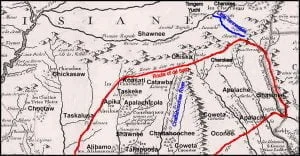Anthropological literature from Florida is awash with statements that presume the coastal peoples of Georgia and South Carolina were primarily fishermen, hunters and gatherers. This may have been the case for many ethnic groups in the coastal regions of the Florida Peninsula, but was not true for many areas of the Georgia and South Carolina coast.
The primary reason listed by René Goulaine de Laudonniére for not placing a French colony on the coast of the Florida Peninsula was that the soil was infertile and the climate, hot. On the first voyage he had noticed that the coast was sparsely inhabited south of the May River, while from the river’s mouth, northward to the Jordan River (Savannah River?) he observed intensive cultivation of the land. The first French colonies would have to be located in a region where they could initially buy surplus food from their indigenous neighbors then be able to feed themselves from their own agriculture.

Less de Laudonniére’s observations being assessed as the unfounded interpretation of the landscape by a mariner, the experience of Spanish St. Augustine can be used as added proof. The mission Indians and Spanish peons around St. Augustine were never able to feed the relative small population of St. Augustine. Former FSU history professor, Theodore Corbitt, estimated that in 1740 St. Augustine had a population of 2,143 persons. During the 1600s, its population probably ranged between 1,200 and 1,600. The small town was totally dependent on food stuffs imported from the missions near the Altamaha River’s mouth, and to a lesser extent, the Apalachee missions in the Florida Panhandle.
During May of 1565, the garrison at Fort Caroline faced starvation because they did not know how to fish or catch crabs. They were told that in the “high country” about 50 leagues (125 miles) up the May River, corn was grown in a large scale, and was becoming ripe. De Laudonniére traveled up the river to purchase some corn, but did not provide any descriptions of the fields.
